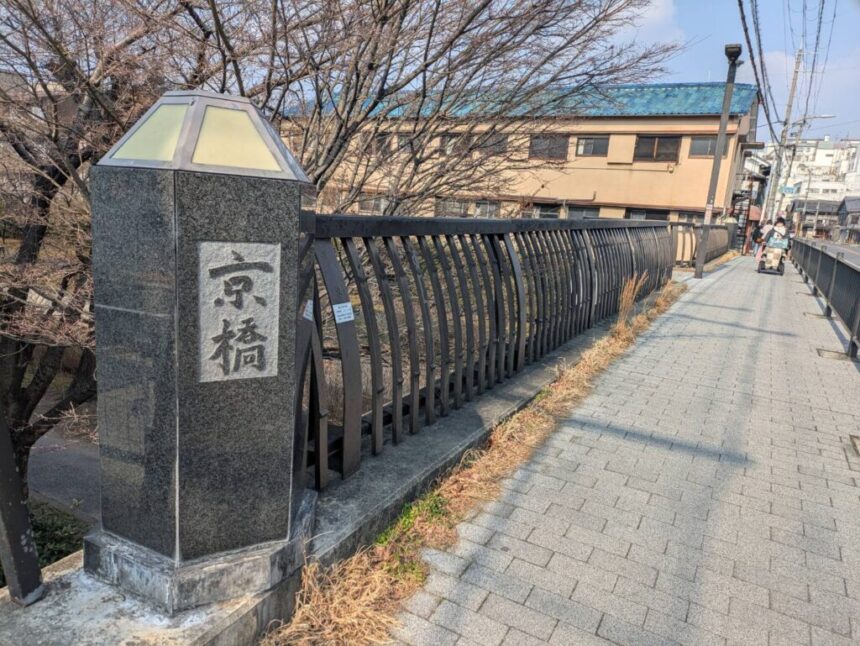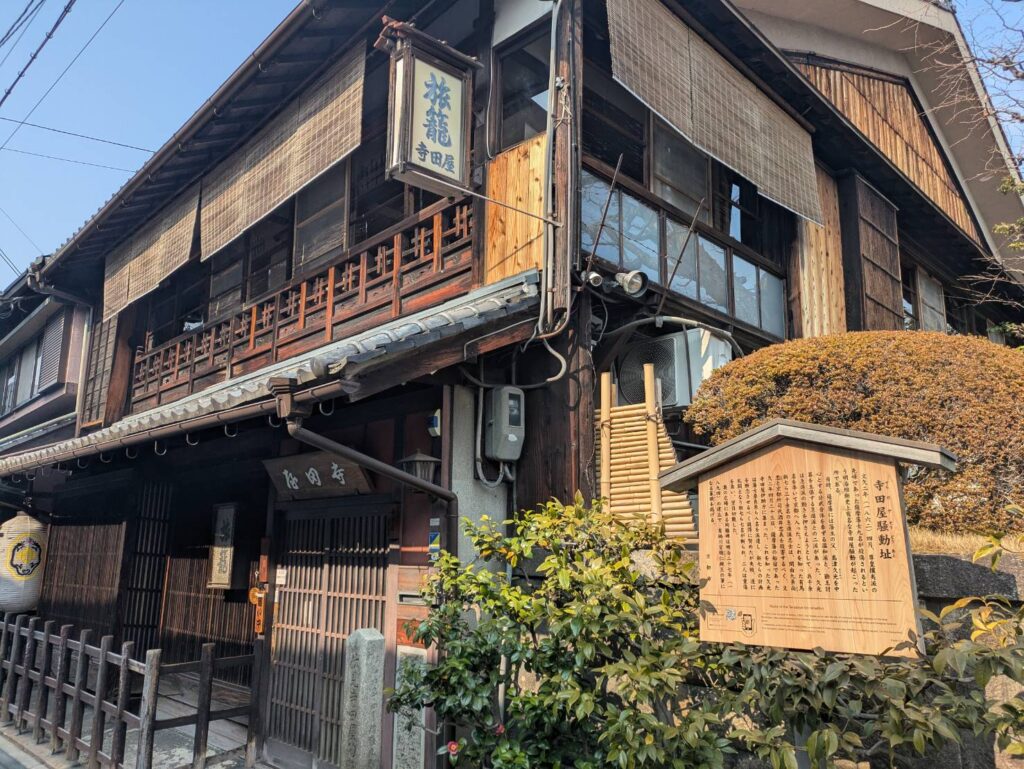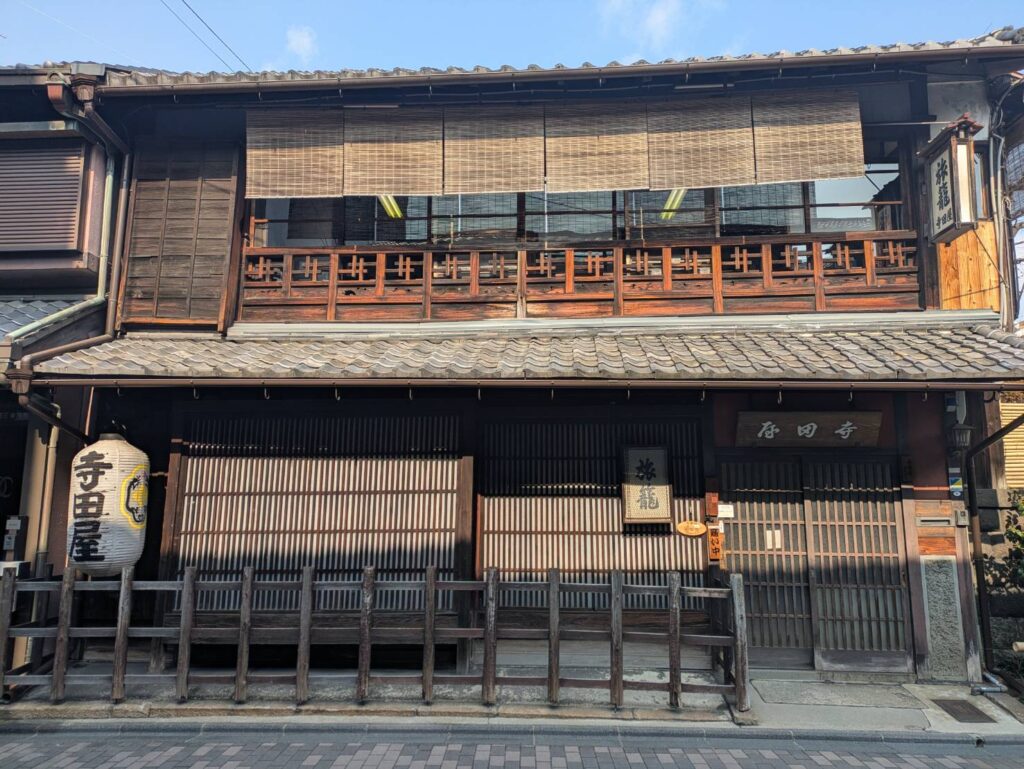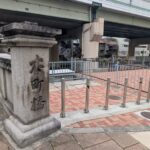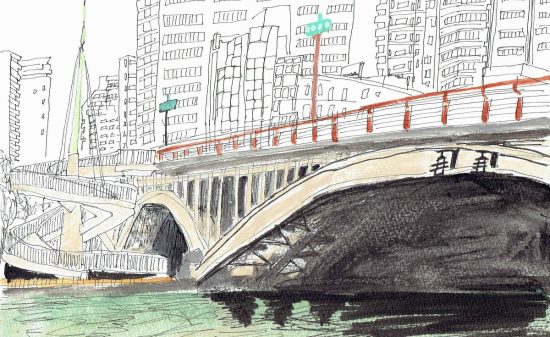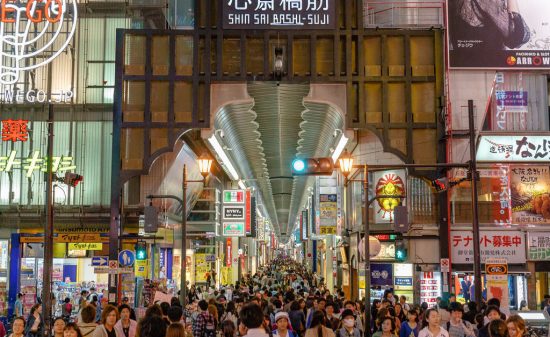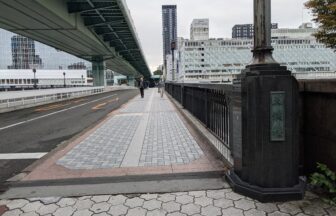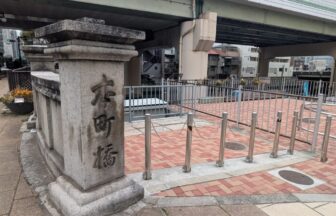Kyobashi in Fushimi, Kyoto | A Bridge That Tells History
Minamihyocho, Fushimi-ku, Kyoto, Japan
Contents
- 1 Discovering Kyobashi in Kyoto’s Fushimi
- 2 Toyotomi Hideyoshi and Fushimi’s Water Transport
- 3 Kyobashi in the Edo Period
- 4 Kyobashi Boat Dock and the Atmosphere of Fushimi
- 5 Fushimi: Kyoto’s Famous Sake Brewing District
- 6 Kyobashi Today – A Bridge That Lives On
- 7 Teradaya: The Historic Ryoma Connection in Fushimi
Discovering Kyobashi in Kyoto’s Fushimi
Walking through the streets of Fushimi, Kyoto, one may come across a bridge named Kyobashi. This is not just any bridge—it was once a key transportation hub supporting the castle town of Fushimi, a vital link in the waterway connecting Kyoto and Osaka during the Edo period.
Today, the river flows quietly, but in the past, Jukkoku-bune and Sanjukkoku-bune boats bustled back and forth, carrying merchants and travelers along the waterways.
Toyotomi Hideyoshi and Fushimi’s Water Transport
When Toyotomi Hideyoshi built Fushimi Castle, he did so not only for military purposes but also to take advantage of Fushimi’s strategic location between Kyoto and Osaka. The Yodo River and Uji River provided ideal waterways, and the castle town was interlaced with canals, boosting trade and transportation.
Kyobashi stood as one of the key bridges along this route, witnessing the movement of people heading to Kyoto or traveling down to Osaka, each carrying their own hopes and ambitions.
Kyobashi in the Edo Period
Under the rule of the Tokugawa shogunate, Fushimi became a shogunate-controlled territory (tenryō) and flourished even further. Around Kyobashi, inns (hatago) and wholesale stores lined the streets, creating a lively commercial district.
Samurai, merchants, and travelers alike crossed this bridge, experiencing the vibrancy of Fushimi firsthand.
Kyobashi Boat Dock and the Atmosphere of Fushimi
Even today, Kyobashi Boat Dock is located near the bridge, where sightseeing boats such as Jukkoku-bune operate. Drifting slowly on the water, one can imagine what life was like in Fushimi’s thriving water transport era.
During the late Edo period, Sakamoto Ryoma, a key figure in Japan’s transformation, also walked these streets. His presence in Fushimi was tied to his efforts in negotiating the Satsuma-Choshu Alliance. He frequently stayed at the historic Teradaya Inn, located near Kyobashi, where he engaged in secret discussions that would shape Japan’s future.
Fushimi: Kyoto’s Famous Sake Brewing District
Fushimi is also known as one of Japan’s most famous sake brewing districts. Near Kyobashi, historic breweries such as Gekkeikan and Kizakura continue to produce high-quality sake using Fushimi’s abundant pure underground water.
For centuries, sake brewed here has quenched the thirst of travelers and lubricated business negotiations. One can imagine Ryoma and his comrades raising their cups, dreaming of a new era while enjoying the sake of Fushimi.
The quiet flowing river, the preserved historical townscape, and the footsteps of Sakamoto Ryoma—all these elements make Kyobashi and Fushimi a place where the spirit of the Bakumatsu era can still be felt.
Kyobashi Today – A Bridge That Lives On
Times have changed, and so has Kyobashi’s role. However, Fushimi remains a town where history is alive.
Visitors can easily access Kyobashi from Keihan Chushojima Station or Fushimi-Momoyama Station, with historical landmarks like Teradaya Inn and Gokounomiya Shrine nearby.
Kyobashi is more than just a bridge—it is a symbol of Fushimi’s history.
Standing on the riverbank, one can still hear the echoes of past travelers who once crossed this bridge, carrying their aspirations into the unknown.
Teradaya: The Historic Ryoma Connection in Fushimi
Located in Fushimi, Teradaya was a historic boat inn that played a key role during Japan’s late Edo period. It was a gathering place for pro-imperial samurai and a crucial site for Sakamoto Ryoma.
Ryoma frequently stayed at Teradaya while working on the Satsuma-Choshu Alliance. In 1866, he was ambushed here by shogunate forces, an event known as the Teradaya Incident. With the help of his wife-to-be, Oryo, he managed to escape despite sustaining injuries.
Today, Teradaya remains a symbol of Japan’s Bakumatsu era, allowing visitors to experience the atmosphere of the turbulent times that shaped modern Japan.
#Kyobashi, Fushimi, Kyoto
#Toyotomi Hideyoshi and Fushimi Castle
#Sakamoto Ryoma and Teradaya Inn
#Sake breweries in Kyoto’s Fushimi
#Historic sightseeing spots in Kyoto
